What is Watercolor Paint? The Things you Should Know
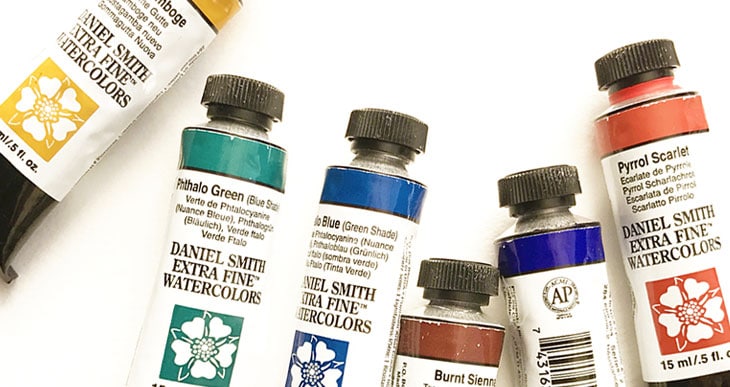
So you’re ready to make a dent in the world of watercolors.
Good for you.
I remember the first watercolor paints I used at school when I was a kid. It was a huge pan set. The colored bricks were as big as my hand with rounded edges for safety ! To be honest, the results were not very good – but at least none of the kids could swallow the paint!
You’ve probably been salivating at the huge selection of beautiful watercolor paint available to you – but what is watercolor paint exactly ?
Watercolor paint is a translucent art medium. Watercolor is basically a colored pigment in a water-soluble binder. The paint dissolves when you add water allowing the pigment to spread with a brush.
If you’re serious about pursuing a hobby as a watercolor artist you need to know what watercolor is. Knowing something about your paint will help you recognize good paint from bad, and help you choose the best watercolors to suit your preferences.
What is watercolor paint made of ?
Watercolor paint is made of a few simple ingredients, but the two main components are the pigment (this provides the color) and the binder (usually gum-arabic). Watercolor paints also contain some other additives which alter the paint’s appearance, the way the paint performs, and to extend the shelf life of the product.
First and foremost you have the very finely ground colored pigments. There are over 100 pigments used in artists watercolor paint. These can be natural or synthetic. Some of the natural pigments are hard to acquire, which makes certain colors more expensive. The quantity of pigment in the paint can also vary depending on it’s grade or quality. Most manufacturers offer two qualities of watercolor paints – professional grade or student grade. With student grade paint the cost is lower because some of the expensive pigments are replaced with moderately priced alternatives. The proportion of pigment in paint varies between 10% and 20%.
The binder in watercolors is traditionally gum-arabic, but some brands use a synthetic binder. The job of the binder is to help the colored pigment attach and “bind” to the watercolor paper. The binder also helps produce a brighter color by holding the pigment particles together on the surface of the paper. Binder is a transparent substance and in general makes up about 50% of the paint.
Gum arabic and synthetic binders tend to dry relatively quickly. Watercolors made only with pigment and gum-arabic will dry to a hard block. For this reason watercolor paint includes a moisturizer and a plasticizer to help extend the life of your paint but also to make it softer and easier to dissolve. These additives also prevent the paint from drying too quickly so that watercolor washes can be applied more easily. The type of moisturizer used is often glucose (for example corn syrup) or sometimes even honey! The plasticizer used is usually glycerin, and makes up about 20% or less of the paint.
A small amount of brightener is sometimes added to watercolor paint. This is usually transparent or white crystals which enhance the color of the pigment, or adjust the lightness of the paint when dried.
Other fillers enhance the handling or color appearance of the paint. These colorless fillers are necessary to improve texture, and provide a smooth and easy to handle consistency. They also modify the way pigment sticks to the paper to prevent it from ‘lifting off’ the surface when you apply new layers of paint. Sometimes fillers are added just to reduce the proportion of costly pigment in the paint.
Water – yes, depending on the type of watercolor paint supplies you buy, they contain a certain amount of water. Watercolors are available in the form of cakes, tubes or in liquid form. Cakes are hard and have a low water content. Tubes contain soft paint with more water content.
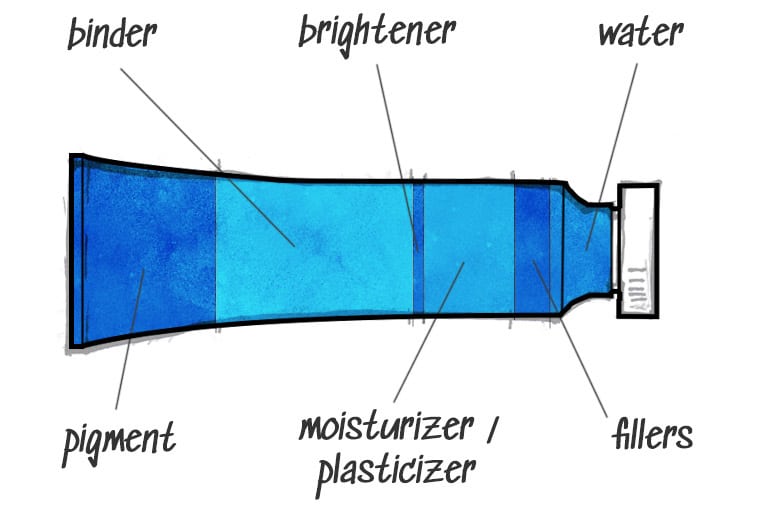
Advantages of watercolor painting
Watercolor is very different to acrylic, oil and gouache. Each of these different paint mediums require different techniques.
With watercolors, the colored pigments remain suspended in the water, until the water evaporates and dries. Water dries quickly, which often means the artist needs to make quick decisions! As a result some people find watercolors challenging.
But watercolor is not necessarily any more difficult than other mediums like oil or acrylic. The oil painter didn’t get it right the first time he started painting, and underneath the final painting are several corrected mistakes. The only difference with watercolors is you’ll probably have to reach for another sheet of paper!
In my opinion, the fluid and transparent qualities, and sometimes unexpected results, are what make watercolors a joy to use. Here are some of the advantages to consider:
- It’s a water-based medium – Err… This seems obvious, but this makes watercolors much less messy than oils or acrylics
- Watercolors do not have a strong smell.
- They dry quickly – Yes this is an advantage, since you can move on quickly to the next steps in your project. A lot of artists (myself included) sometimes use a hairdryer to make the drying process even quicker!
- They are easy to work with – watercolors are pleasant, easy to mix and apply, and one of the simplest mediums for any artist.
- Portability – watercolors are light and easy to transport. Fantastic for sketching “en plein air”
- Your paint brushes can be easily cleaned with soap and water
- Not much waste. If you have paint left over in you palette, it will dry up. But you can easily recover the paint next time by adding water.
How to choose watercolor paints – Some characteristics you should know
Making good watercolor paint is a complex and delicate process. Each ingredient contributes its own benefits and drawbacks to the composition of the paint. This is why the best paints are made by reliable and long-established brands who have considerable manufacturing experience.
There are a few characteristics that you should look for to help you judge the quality of watercolors.
Lightfastness or permanence. This important characteristic indicates the longevity of your paintings. It describes a painting’s resistance to fading when exposed to light. There is now a worldwide standard for lightfastness published by the ASTM (American Society for Testing and Materials standard)
The lightfastness ratings are:
ASTM I — Excellent Lightfastness
ASTM II — Very Good Lightfastness
ASTM III — Not Sufficiently Lightfast to be used in artists’ paints
Look on the packaging for the rating and only choose paint with “very good” or “excellent” lightfastness. After all, you want your painting to last… Right ?
Transparency. You might be thinking “isn’t all watercolor paint transparent” ? After all, transparency is one of the key aesthetic properties of this art medium. But watercolors paints exist in different levels of transparency. There are four general categories:
Transparent, semi-transparent, semi-opaque, and opaque.
Fully transparent watercolors give a brighter and more luminous result because they allow light to pass through and reflect back off the white surface of the paper. Professional artists recommend using almost exclusively transparent paint for the best results. Opaque paints are thicker and chalky in appearance. Most watercolorists who use opaque paints only use them in moderation. You can normally find this information on the paint packaging.
Colors
There are many many different colors to choose from and there are many beautiful pigments and paint formulations out there. Watercolor manufacturers give their paint some very romantic names – Scarlett Lake, French Ultramarine, Vermilion. But the names are just for marketing purposes. A name does not recommend that you get the same color from one brand to another. If you remember from earlier, what provides the color is the pigment. So the final color of the paint depends on the pigment concentration and the mix of pigments in each paint’s recipe.
Also, single pigment paints produce more lively and vivid colors than several pigments mixed together. This is why, when you mix a lot of different watercolor paints together you tend to get a slightly dull result.
When choosing colors it’s a good idea to select single pigment paints.
So to sum up, for the best quality results I recommend you use transparent, single pigment paint with very good or excellent lightfastness. Paints with these characteristics perform well, and are easy to mix and apply because there is only one pigment involved in each individual paint.
In theory you can produce every color you need just by mixing primary colors (blue, red and yellow). But to do this you need to be confident in your mixing abilities. If you are trying to learn watercolors, mixing single pigment paints together to achieve the desired result can be a tall order! For this reason it is common to include some “convenience mixture” colors (paints that include more than one pigment) just to make life easier.
Don’t stress about any of this. You now know more about the objective measures and characteristics of watercolor paint. But choosing paint is always a matter of personal preference. Start with a basic but limited color palette and enjoy yourself !
See my recommended watercolor paint colors if you need help.
Now go splash some paint !


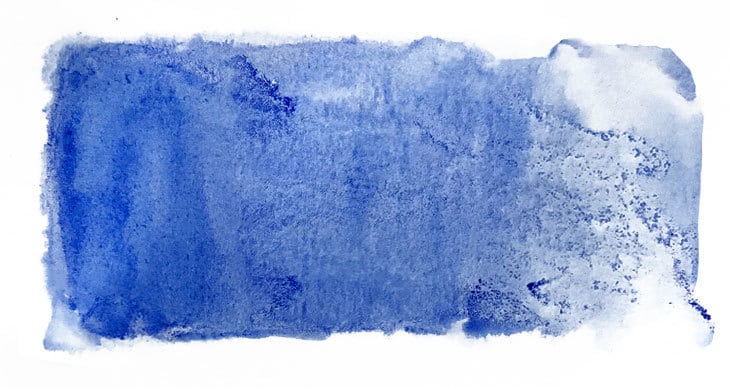
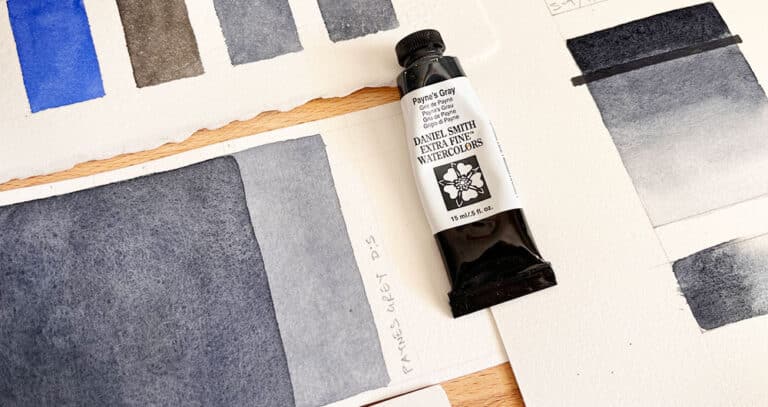

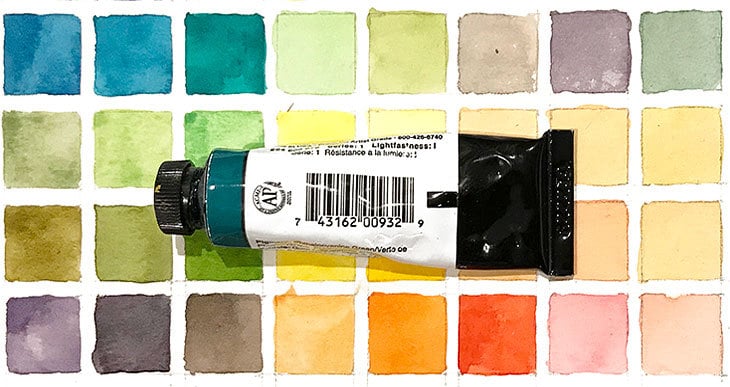
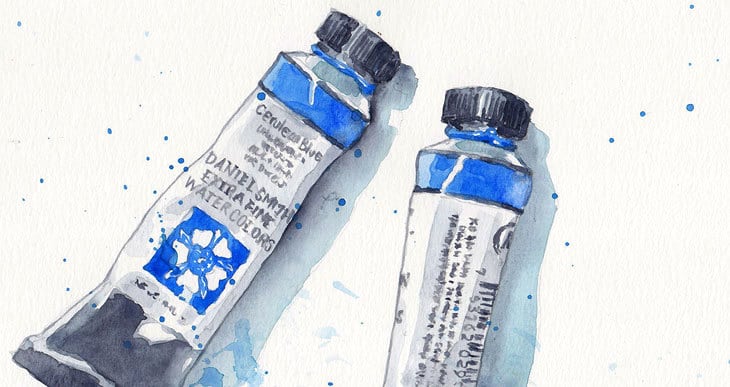

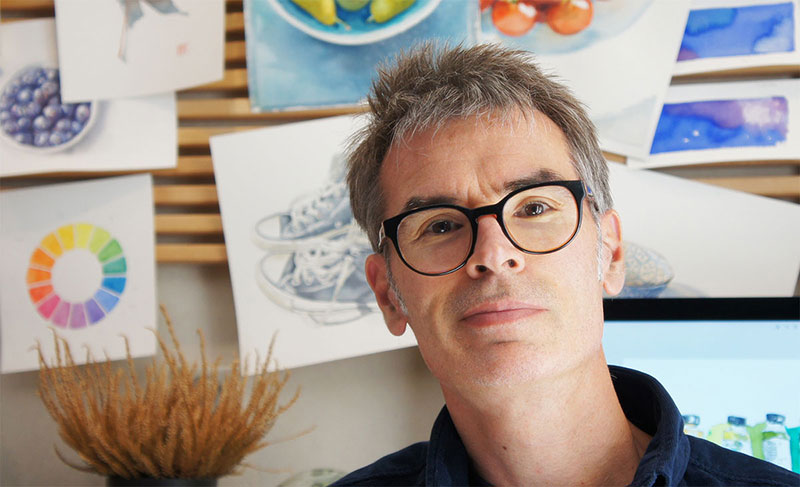
Thanks for this great post, lots to learn about water painting
Excellent post, very informative.
100 Pigments, who would have known. I’m always amazed when watching an artist mix colors.
Thanks for the info.